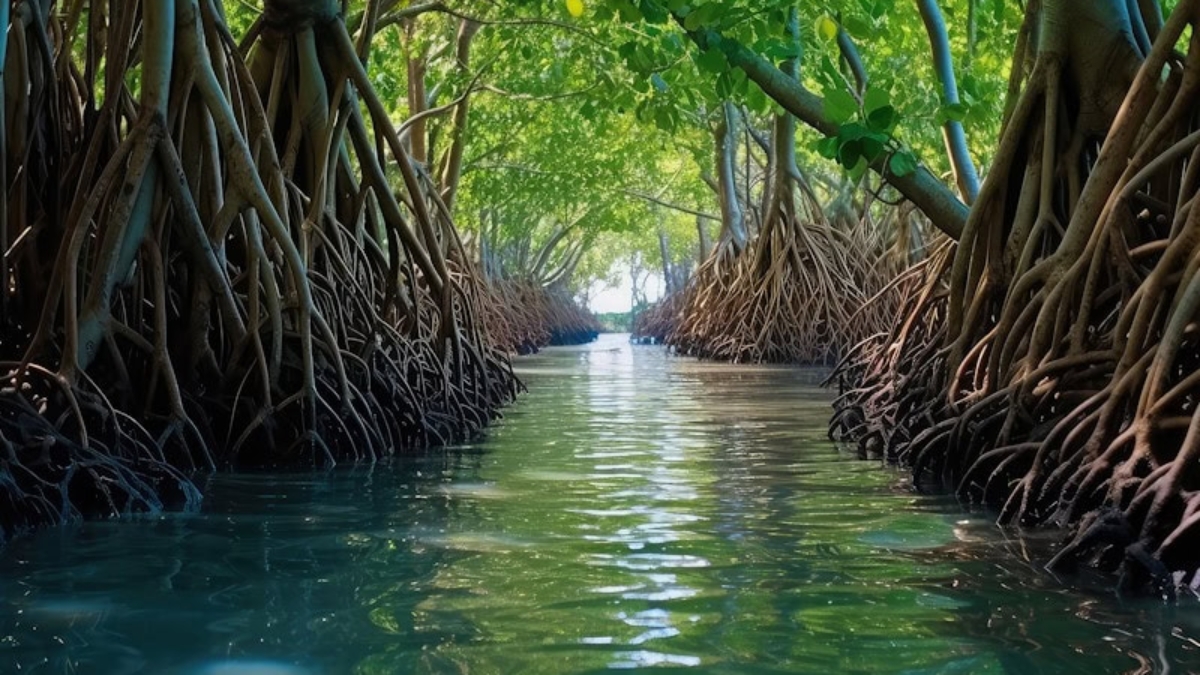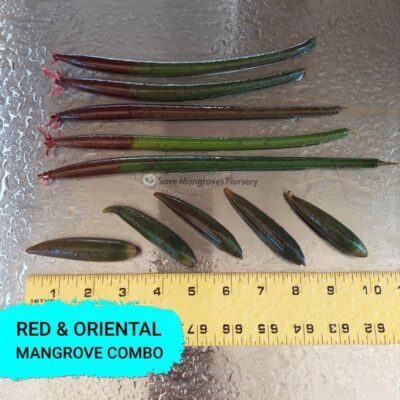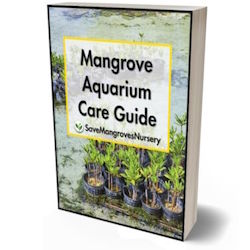Growing red mangroves in an aquarium is a fascinating and rewarding endeavor, especially for those who are passionate about maintaining healthy aquatic environments. But one question that often arises among hobbyists is whether red mangroves can thrive in freshwater environments. As a professional aquarium enthusiast, I’ve had my fair share of experiences with red mangroves, and I can tell you that while it is possible, there are some key considerations to keep in mind.
Understanding Red Mangroves
What Makes Red Mangroves Unique?
Red mangroves (Rhizophora mangle) are a species of mangrove that are well-known for their distinctive prop roots that grow above the water’s surface. These roots are not just visually striking but also play a crucial role in stabilizing the plant and allowing it to survive in challenging environments. Native to tropical and subtropical regions, red mangroves are typically found in coastal saltwater environments, such as estuaries and tidal zones.
Mangroves in Their Natural Habitat
In the wild, red mangroves grow in a mix of saltwater and freshwater, known as brackish water. This adaptability to brackish environments has led many to wonder if they can be successfully grown in pure freshwater. However, it’s important to remember that while mangroves are incredibly resilient, their natural preference is for environments where saltwater is present.
Can Red Mangroves Survive in Freshwater?
The Pros and Cons of Freshwater for Mangroves
Let’s explore the potential benefits and challenges of growing red mangroves in freshwater environments.
✅ Good: Freshwater Tanks Are Easier to Maintain
Freshwater tanks are generally easier to maintain than saltwater tanks. They don’t require the precise balancing of salt levels, which can be a relief for those new to keeping mangroves or aquariums in general.
❌ Bad: Lack of Salt Could Stress the Plant
Red mangroves have evolved to thrive in salty environments. The absence of salt can lead to stress and make them more susceptible to disease. In some cases, you might notice yellowing leaves or stunted growth, which are signs that your mangrove isn’t getting the nutrients it needs.
✅ Good: They Can Still Serve as Natural Filters
Even in freshwater, red mangroves are excellent at filtering out toxins and improving water quality. They absorb nitrates, phosphates, and other compounds that can be harmful to fish and other aquatic life.
❌ Bad: Slow Growth Rate in Freshwater
If you’re looking for rapid growth, you might be disappointed. Red mangroves grow more slowly in freshwater compared to brackish or saltwater environments. This slower growth can be a downside if you’re hoping to see quick results.
Tips for Growing Red Mangroves in Freshwater
Start with Healthy Propagules
One of the most important steps in growing red mangroves in freshwater is starting with healthy propagules. At Save Mangroves Nursery, we ensure that all our red mangrove propagules are healthy and ready to thrive in your aquarium, whether it’s freshwater, saltwater, or brackish.
When you receive your propagules, inspect them for any signs of damage or disease. Healthy propagules will be firm to the touch and free of any blemishes or discoloration.
Provide Adequate Lighting
Mangroves need plenty of light to thrive, and this is especially true in freshwater environments where they may already be under some stress. Aim to provide at least 12 hours of light per day using full-spectrum aquarium lighting. If your mangroves aren’t getting enough light, you’ll notice that their growth will slow even further, and the leaves may start to yellow.
🔴🚫 Fun Fact:
Did you know that mangroves have specialized cells that filter out salt? This unique adaptation allows them to thrive in environments where other plants might struggle.
Monitor Water Quality
Keeping an eye on water quality is crucial when growing mangroves in freshwater. While mangroves are excellent at improving water quality, they still require a balanced environment to thrive. Regularly check the pH levels, temperature, and nutrient levels in your tank. Mangroves prefer slightly acidic to neutral pH levels (around 6.5 to 7.5) and temperatures between 72°F and 82°F.
If you notice any drastic changes in your water parameters, take action immediately to avoid stressing your mangroves. Adding aquarium-safe supplements can also help provide the nutrients your mangroves need.
✅ Good: Stable Water Conditions Promote Growth
Stable water conditions are key to helping your mangroves adapt to freshwater. Regular water changes and careful monitoring can go a long way in ensuring their success.
❌ Bad: Inconsistent Care Leads to Problems
Inconsistent care, such as neglecting water changes or failing to monitor water quality, can quickly lead to problems. Mangroves are resilient, but they aren’t invincible.
Long-Term Success with Freshwater Mangroves
Patience is Key
One thing I’ve learned from growing mangroves in aquariums is that patience is essential. Mangroves are slow growers, especially in freshwater, so don’t be discouraged if you don’t see immediate results. With time and proper care, your mangroves will start to establish themselves and contribute to a healthier aquarium environment.
🔴🚫 Mangrove Fact:
Mangroves can absorb up to five times more carbon dioxide per hectare than tropical rainforests, making them vital players in combating climate change.
Consider Adding Salt Gradually
If you find that your mangroves are struggling in pure freshwater, you might consider gradually introducing a small amount of salt to the water. This can help mimic their natural brackish environment and reduce stress on the plant. Start with a very low concentration and monitor how your mangroves respond.
Don’t Forget About Root Growth
Mangroves are known for their extensive root systems, which are essential for their stability and nutrient uptake. In an aquarium, you might not see much root growth at first, but rest assured that your mangroves are working hard to establish themselves. Over time, you’ll notice the roots expanding and anchoring themselves in the substrate or through their prop roots above the water.
✅ Good: Healthy Root Growth = Healthy Mangroves
A strong root system is a sign of a healthy mangrove. Regularly check the roots for any signs of rot or damage, and make adjustments as needed.
❌ Bad: Overcrowding Can Stunt Growth
Avoid overcrowding your mangroves in the tank. Each plant needs space to spread its roots and access light and nutrients. Overcrowding can lead to competition and stunted growth.
Final Thoughts: Is Freshwater Right for Your Mangroves?
Growing red mangroves in freshwater is certainly possible, but it comes with its own set of challenges. By understanding the needs of these unique plants and providing the right conditions, you can enjoy the benefits of mangroves in your freshwater aquarium.
At Save Mangroves Nursery, we’re here to support you in your mangrove-growing journey. We offer healthy Live Red Mangrove Plants that are ready to add to and naturally filter your Saltwater, Freshwater, or Brackish Aquarium tanks. We ship out to all 50 states daily, so you can get started on creating a thriving aquatic environment in no time.
Whether you’re a seasoned aquarium enthusiast or just starting out, growing mangroves can be a rewarding experience. With patience, care, and the right knowledge, you can successfully grow red mangroves in freshwater and enjoy the beauty and benefits they bring to your aquarium.
Best seller products
-
18”-24” Red Mangroves With Roots & 2-4 Leaves
Price range: $34.99 through $87.99 -
10”-14” Red Mangroves With Roots & 2-4 Leaves
Price range: $19.99 through $47.99 -
28″ Red Mangrove Tree – Fully Mature Plant
Price range: $0.00 through $230.00 -
[RARE] Orange Oriental Mangroves Propagule Seeds
Price range: $19.99 through $79.99 -
30″ Red Mangrove Tree – Fully Mature Plant
Price range: $0.00 through $180.00 -
Red & Oriental Mangrove Combo Bundle
Price range: $29.99 through $44.99
 Cart is empty
Cart is empty 




![[RARE] Orange Oriental Mangroves Propagule Seeds](https://savemangroves.com/wp-content/uploads/2025/07/Oriental-Mangrove-Seeds-Save-Mangroves-Nursery-400x400.jpg)



Add a Comment
You must be logged in to post a comment